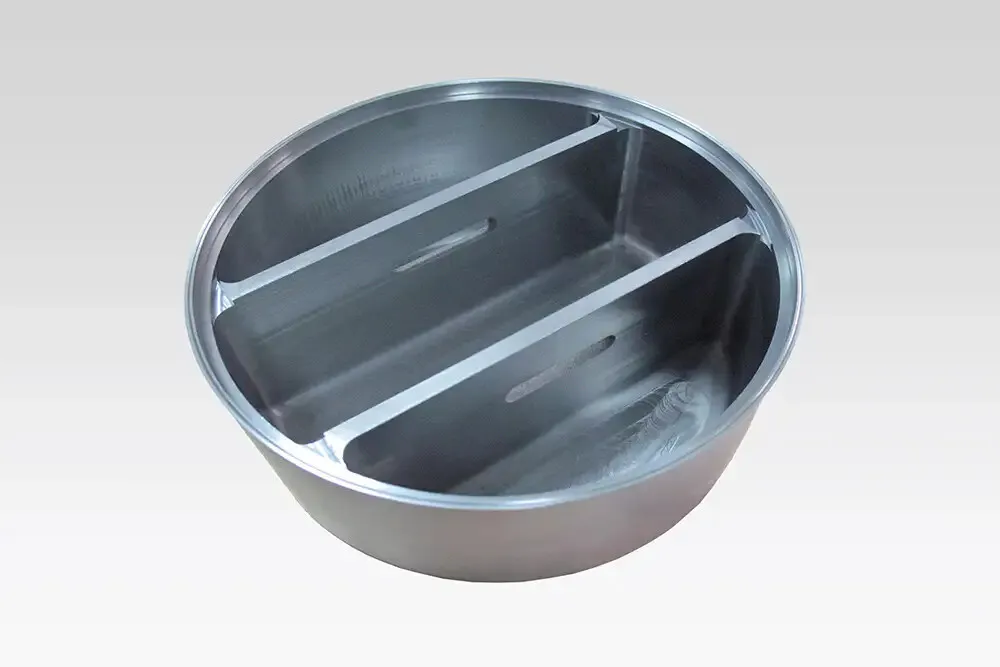Tungsten crucibles play a critical role in high-temperature industrial processes due to their exceptional heat resistance, mechanical strength, and chemical stability. With a melting point exceeding 3,400°C, tungsten is ideal for applications that demand extreme thermal endurance and minimal contamination. These crucibles are commonly used in crystal growth, rare-earth smelting, and the production of high-purity metals, especially in industries such as aerospace, electronics, and photovoltaics.

A tungsten crucible is a container made of tungsten, a refractory metal known for its exceptional properties, including:
High Melting Point: With a melting point of 3422 °C (6192 °F), tungsten can withstand extremely high temperatures without deforming or melting.
High Density: Its high density (around 19.3 g/cm³) provides stability at high temperatures.
Excellent Corrosion Resistance: Tungsten resists corrosion from many chemicals, especially molten metals and rare earth elements.
Good Thermal Conductivity: It ensures efficient and uniform heating of the materials inside.
Low Thermal Expansion: This prevents cracking or deformation due to temperature changes.
High Strength at High Temperatures: It can maintain its structural integrity even at elevated temperatures.
Low Vapor Pressure: This minimizes contamination of the materials being processed.
Due to these remarkable properties, tungsten crucibles find a wide range of applications in various industries and scientific fields:
Sapphire Single Crystal Growth: Tungsten crucibles are crucial in sapphire crystal growth furnaces (KY and HEM methods) due to their high-temperature resistance and purity, ensuring high-quality crystals for LEDs and other applications.
Semiconductor Single Crystal Growth: Used in Czochralski and other methods for growing silicon, gallium arsenide (GaAs), and gallium nitride (GaN) single crystals, essential for the electronics industry.
Smelting of Rare Earth Metals: Their corrosion resistance makes them ideal for containing molten rare earth elements.
Melting Precious Metals: Used for melting and refining high-purity gold, silver, and platinum without contamination.
Production of Superalloys: Employed in vacuum induction melting furnaces for producing cobalt-based and nickel-based superalloys used in aerospace and other high-performance applications.
Smelting of Refractory Metals and Alloys: Suitable for melting tungsten, molybdenum, rhenium, and their alloys.
Melting Quartz Glass: Used as core vessels in quartz glass melting furnaces.
Sintering of Ceramics: Can serve as containers or molds for sintering advanced ceramics like silicon carbide and zirconia at high temperatures.
Electron Beam Evaporation: Tungsten crucibles hold the material to be vaporized and deposited as thin films in various applications, including semiconductor manufacturing and optical coatings.
Sputtering Targets: Although not directly a crucible, tungsten is also used to manufacture sputtering targets.
High-Temperature Experiments: Used as reliable containers for various high-temperature chemical reactions, material testing, and analysis.
Elemental Analysis: Can be used for heating samples to extreme temperatures for analysis.
Sample Melting: For preparing samples for techniques like X-ray fluorescence and spectroscopic analysis.
In summary, tungsten crucibles are indispensable tools in processes demanding high temperatures, corrosion resistance, and high purity, playing a vital role in the production of advanced materials and scientific research.
Share this page
If you have any product needs or questions, please leave us a message for consultation.
TEL: 86-18623759992
jason@bettmetal.com
Innovating Materials
for a Brighter Future